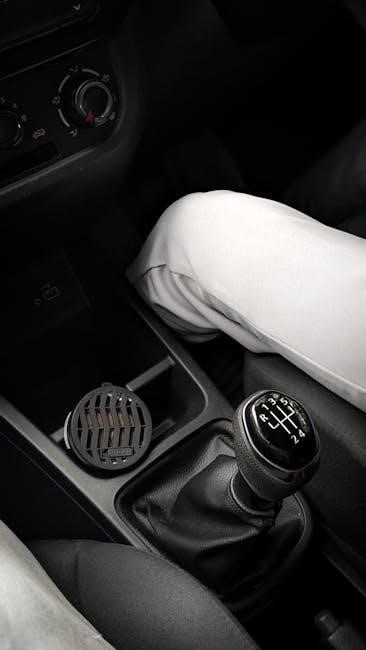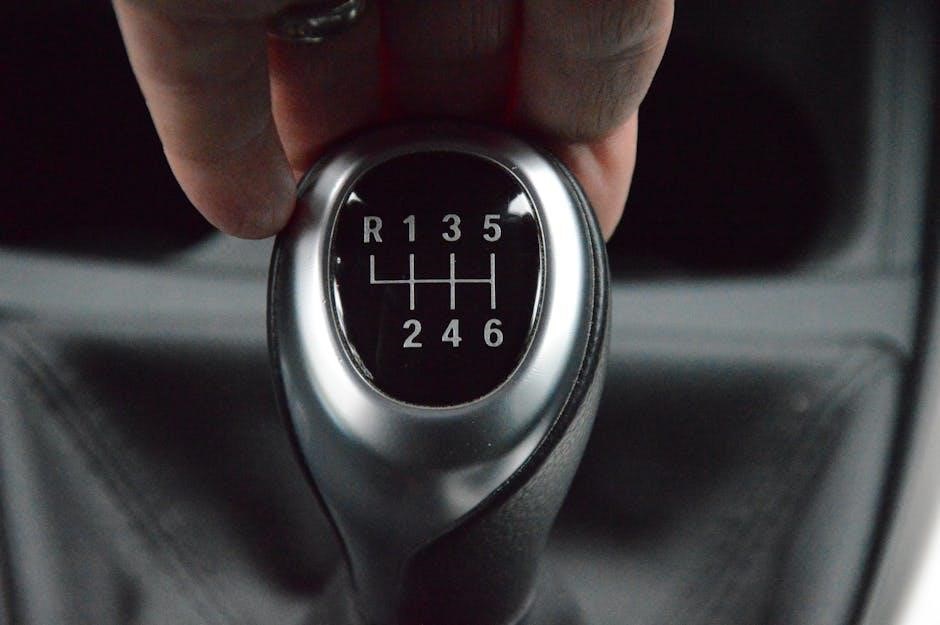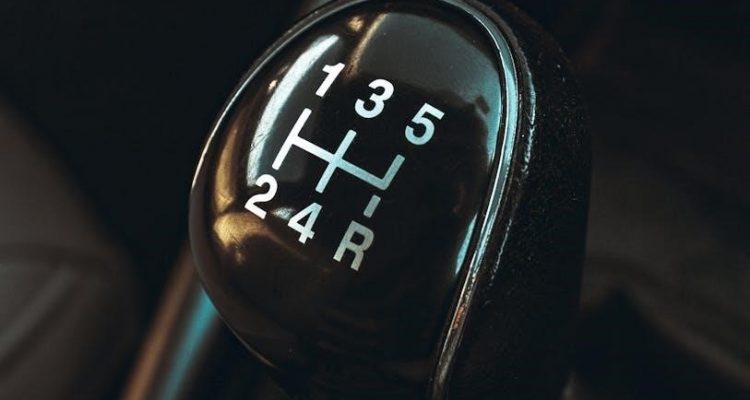Overview of the MN Drivers Manual
The MN Drivers Manual is an essential guide for all drivers, providing detailed information on road rules, traffic signs, and safe driving practices in Minnesota. It is available in PDF and audio formats, updated annually to reflect changes in state laws and regulations. The manual is designed to help both new and experienced drivers understand their responsibilities and stay safe on the road.

1.1 Purpose and Importance of the Manual
The MN Drivers Manual serves as a comprehensive guide to educate drivers on state-specific traffic laws, road safety, and responsible driving practices. It ensures all drivers understand their legal obligations, promoting safe and informed decision-making on Minnesota roads.
1.2 Key Topics Covered in the Manual
The MN Drivers Manual covers essential topics such as road rules, traffic signs, and safe driving practices. It also includes sections on driver’s license application processes, legal requirements, and updated state laws to ensure comprehensive preparation for all Minnesota drivers.
1.3 Availability and Formats (PDF, Audio, etc.)
The MN Drivers Manual is available for free online in PDF and audio formats, ensuring accessibility for all users. Printed copies can be purchased at Anoka County License Centers. Spanish and other language versions are also available for diverse audiences.
Road Rules and Regulations
The MN Drivers Manual outlines Minnesota’s traffic laws, including speed limits, right-of-way rules, and seat belt regulations, ensuring drivers understand their legal obligations for safe and responsible driving.
2.1 Speed Limits and Traffic Laws
Minnesota’s speed limits vary by location, with urban areas typically capped at 30-55 mph and rural highways up to 70 mph. The manual emphasizes strict adherence to traffic laws, including following speed limits, stopping at stop signs, and obeying traffic signals to ensure safety and avoid penalties.
2.2 Right-of-Way Rules
Understanding right-of-way rules is crucial for safe driving in Minnesota. The manual outlines when to yield to oncoming traffic, pedestrians, and emergency vehicles. Specific scenarios include four-way stops and T-intersections, ensuring drivers know who has priority to minimize accidents and maintain traffic flow.
2.3 Seat Belt and Safety Regulations
The MN Drivers Manual emphasizes seat belt laws, requiring all drivers and passengers to wear a seat belt. Child passengers under 8 or shorter than 4’9″ must use approved restraints. Violations result in fines, reinforcing the importance of safety measures to protect lives on Minnesota roads.

Traffic Signs and Signals
The MN Drivers Manual details various traffic signs, including warning, guide, and construction signs, and explains traffic signal phases to ensure safe navigation of Minnesota roads.
3.1 Types of Traffic Signs (Warning, Guide, Construction)
The MN Drivers Manual categorizes traffic signs into warning, guide, and construction types. Warning signs alert drivers to potential hazards, while guide signs provide directional or informational assistance. Construction signs indicate roadwork zones, ensuring safe navigation through work areas. Understanding these signs is crucial for safe driving in Minnesota.
3.2 Understanding Traffic Signal Phases
Traffic signals in Minnesota follow a standardized sequence: green indicates go, yellow signals preparation to stop, and red requires stopping. Some signals include arrows for turning or pedestrian phases. The manual emphasizes understanding these phases to prevent accidents and ensure smooth traffic flow.
3.4 Special Signs for Roundabouts
Roundabouts in Minnesota are marked with unique signs, including yield-at-entry signs and circular intersection symbols. These signs guide drivers to yield to traffic already in the roundabout and navigate safely through the circle, reducing congestion and accidents. The manual covers these signs in detail to promote safe navigation.
Safe Driving Practices
The MN Drivers Manual emphasizes defensive driving, adapting to adverse weather, and night driving tips. It promotes staying alert, maintaining safe distances, and being aware of surroundings to ensure safe and responsible driving habits.
4.1 Defensive Driving Techniques
Defensive driving techniques highlighted in the MN Drivers Manual include staying alert, anticipating others’ actions, and maintaining a safe distance. It also covers scanning the road, managing speed, and being prepared to react to unexpected situations to minimize risks and enhance safety on Minnesota roads.
4.2 Driving in Adverse Weather Conditions
Adverse weather conditions like rain, snow, and fog require cautious driving. Reduce speed, increase following distance, and use low beams in fog. In snowy or icy conditions, slow down and avoid sudden movements. Always use headlights for visibility and exercise extreme patience to maintain safety on Minnesota roads.
4.3 Night Driving Tips
Reduce speed and increase following distance at night. Use low beams to avoid blinding other drivers. Avoid looking directly at oncoming headlights. Clean windshield and headlights for better visibility. Be cautious of pedestrians and animals. Stay alert and patient, as night driving can reduce reaction time and visibility.
Types of Driver’s Licenses
Minnesota offers various driver’s licenses, including Class D for standard vehicles, Motorcycle licenses for two-wheelers, and Commercial Driver’s Licenses for large vehicles, each with specific requirements and privileges.
5.1 Class D Driver’s License
The Class D driver’s license in Minnesota is required for operating non-commercial vehicles, such as cars and light trucks. It is the standard license for personal use and is issued to drivers who meet age, residency, and eligibility requirements.
5.2 Motorcycle License Requirements
To obtain a motorcycle license in Minnesota, applicants must meet specific requirements, including a vision test, written exam, and skills test. Completion of a motorcycle safety course is strongly recommended. The MN DPS outlines these details in the Motorcycle Operations Manual, available online.
5.3 Commercial Driver’s License (CDL) Overview
A Commercial Driver’s License (CDL) in Minnesota is required for operating vehicles over 26,000 pounds or designed to transport 16+ passengers. Eligibility includes being at least 21 years old, passing vision, knowledge, and skills tests, and meeting federal medical standards. The MN CDL Manual details classification types, endorsements, and restrictions.
Application Process
The MN Drivers Manual outlines the steps to apply for a driver’s license, including submitting required forms, documents, and fees; It guides applicants through the process efficiently, ensuring compliance with state regulations.
6.1 Steps to Apply for a Driver’s License
- Complete the application form for a driver’s license.
- Submit required identity, residency, and legal documents.
- Pass a vision test and knowledge exam.
- Pay the applicable fees for the license.
- Schedule and complete a road test if required.
6.2 Required Documents for Application
- Provide proof of identity, such as a valid passport or birth certificate.
- Show residency documents, like a utility bill or lease agreement.
- Submit legal documents, including Social Security card or W-2 form.
- Additional documentation may be required for non-citizens or name changes.

6.3 Fees and Payment Methods
The application fee for a Minnesota driver’s license varies by license type. Payment can be made using cash, credit cards, or checks at driver’s license centers. Additional fees may apply for knowledge tests, road tests, or duplicate licenses. Fees are subject to change, so check the latest manual for current rates.

Practice Tests and Preparation

The Minnesota DMV offers free practice tests with over 170 questions. Use online resources, interactive manuals, and study guides to prepare for your permit or driver’s test effectively.
7.1 Permit Test Questions and Answers
The MN Drivers Manual includes a practice test with over 170 questions to help prepare for the permit test. These questions cover road rules, signs, and safe driving practices, ensuring applicants are well-prepared for the actual exam. Use online resources for additional state-specific practice tests and study guides.

7.2 Driver’s Test Preparation Tips
Review the MN Drivers Manual thoroughly, focusing on roundabouts and safe driving practices. Practice common scenarios, such as three-point turns and merging. Use interactive tools like audio manuals and AI chat for personalized study. Ensure familiarity with traffic laws and signs to build confidence for the test;
7.3 Online Resources for Practice
Utilize online tools like DMV Prep for practice tests and interactive guides. The Minnesota DPS website offers downloadable manuals and audio versions. Take advantage of AI-driven study aids for personalized preparation and access over 170 practice questions to ensure readiness for the driver’s test.

Updates and Changes
The Minnesota Drivers Manual is updated annually to reflect new laws and driving regulations. Recent changes include added guidance on roundabouts and updated rules for carrying firearms during traffic stops. Stay informed by accessing the latest version online through the DPS website.
8.1 Recent Amendments to Driving Laws
Recent amendments to Minnesota driving laws include new rules for handling firearms during traffic stops and expanded guidance on roundabout navigation. These changes aim to enhance safety and clarity for drivers, ensuring compliance with updated regulations. Stay informed by reviewing the latest manual updates.
8.2 How to Stay Informed About Manual Updates
Stay informed about MN Drivers Manual updates by visiting the Minnesota Department of Public Safety (DPS) website or checking official DMV resources. Regularly reviewing the latest manual version ensures compliance with updated laws and regulations. Subscribe to DPS notifications for timely updates on changes.
8.3 Accessing the Latest Manual Version
The latest MN Drivers Manual can be accessed online for free in PDF or audio formats through the Minnesota Department of Public Safety (DPS) website. Hard copies are also available for purchase at select locations, ensuring drivers always have the most up-to-date information.

Legal and Safety Considerations
In Minnesota, drivers must carry minimum liability insurance coverage to legally operate a vehicle. Proof of insurance is required during traffic stops and accidents to avoid penalties.
9.1 Consequences of Violating Traffic Laws
Violating Minnesota traffic laws can result in fines, increased insurance rates, or license suspension. Repeat offenses may accumulate points, leading to stricter penalties. These consequences aim to enforce compliance with traffic laws and ensure road safety for all drivers.
9.2 DUI Laws and Penalties
In Minnesota, driving under the influence (DUI) of alcohol or drugs carries severe penalties, including fines, license suspension, and mandatory ignition interlock installation. Repeat offenses escalate consequences, potentially leading to jail time. The Minnesota Ignition Interlock Program requires offenders to use a breathalyzer device to restart their driving privileges.
9.3 Insurance Requirements
In Minnesota, drivers must carry minimum liability insurance coverage, including $30,000 for bodily injury per person, $60,000 per accident, and $10,000 for property damage. Drivers must provide proof of insurance during traffic stops or accidents. Uninsured motorists face penalties, including fines and license suspension.
Additional Resources
Additional resources include DMV office locations, driver education courses, and online tools. These resources help drivers access necessary information, enroll in courses, and utilize digital tools for licensing and driving-related tasks.
10.1 DMV Office Locations
DMV office locations are available statewide, providing convenient access for drivers to apply for licenses, renewals, and other services. Visit the Minnesota DPS website or check local directories for a full list of offices and their operating hours. Offices offer assistance with various driver-related tasks.
10.2 Driver Education Courses
Driver education courses in Minnesota are designed to prepare new drivers for the road. These courses cover essential topics like traffic laws, road signs, and defensive driving techniques. They are available in both classroom and online formats, offering structured learning to help individuals gain the knowledge needed to drive responsibly and safely.
10.3 Online Tools for Drivers
Minnesota offers various online tools to assist drivers, including practice tests, driver education resources, and guides for license applications. The MN DPS website provides access to forms, manuals, and renewal options. Additionally, platforms like DMV Prep offer interactive study materials and permit test questions for convenient preparation.
